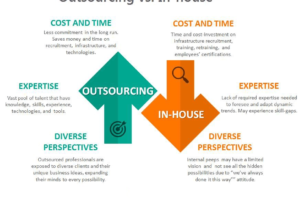[ad_1]
Building Dynamic Websites with Ruby: A Developer’s Perspective
Ruby is a powerful programming language that has gained popularity among web developers. Its simplicity and flexibility make it an ideal choice for building dynamic websites. In this article, we will explore the benefits of using Ruby for web development and discuss some key components involved in building dynamic websites with Ruby.
Ruby’s simplicity and readability make it a favorite among developers. Its syntax is similar to English, making it easier to understand and write code. This simplicity also allows developers to build dynamic websites quickly and efficiently.
One of the key components of building dynamic websites with Ruby is the Ruby on Rails framework. Rails is a server-side web application framework that is built on Ruby. It provides developers with a set of tools and conventions that make web development easier and more efficient.
One of the most significant advantages of using Ruby on Rails is its convention over configuration philosophy. This means that Rails provides default configurations for most things, so developers don’t have to spend time configuring every aspect of their application. This speeds up development time and allows developers to focus on building the actual features and functionality of their website.

Another advantage of using Ruby on Rails is its built-in support for database integration. Rails provides an Object Relational Mapping (ORM) called ActiveRecord, which makes it easy to interact with databases. Developers can easily write Ruby code to query and manipulate data in their applications, without having to write complex SQL queries.
Ruby on Rails also follows the Model-View-Controller (MVC) architectural pattern. MVC separates an application into three main components: models, views, and controllers. This separation of concerns allows developers to organize their code more efficiently and makes it easier to maintain and test their applications.
Models represent the data in the application and handle the interactions with the database. Views are responsible for the user interface and displaying data to the user. Controllers handle the logic and coordination between the models and views.
Another key component of building dynamic websites with Ruby is the use of gems. Gems are pre-packaged code libraries that provide additional functionality to Ruby applications. There are thousands of gems available for various purposes, including authentication, payment processing, and image manipulation. Developers can easily incorporate these gems into their applications to add functionality without having to write all the code from scratch.
In addition to Ruby on Rails and gems, developers can also use other tools and frameworks to enhance their development process. One such tool is the Bundler, which manages the dependencies of a Ruby application. It allows developers to specify which gems their application requires and automatically installs them.
Another useful tool for building dynamic websites with Ruby is RSpec, a testing framework. RSpec allows developers to write tests for their application to ensure that it functions as expected. This is especially important for dynamic websites, as they often have complex interactions and need to respond correctly to user input.
Uncover Unbeatable Deals on Web Hosting: Bluehost Coupon Offers
In conclusion, building dynamic websites with Ruby offers many advantages for web developers. Its simplicity and readability make it easy to learn and use, allowing developers to build websites quickly and efficiently. The Ruby on Rails framework, coupled with gems and other tools, provides a solid foundation for building dynamic and robust web applications. Whether you are a beginner or an experienced developer, Ruby is definitely worth considering for your next web development project.
[ad_2]





